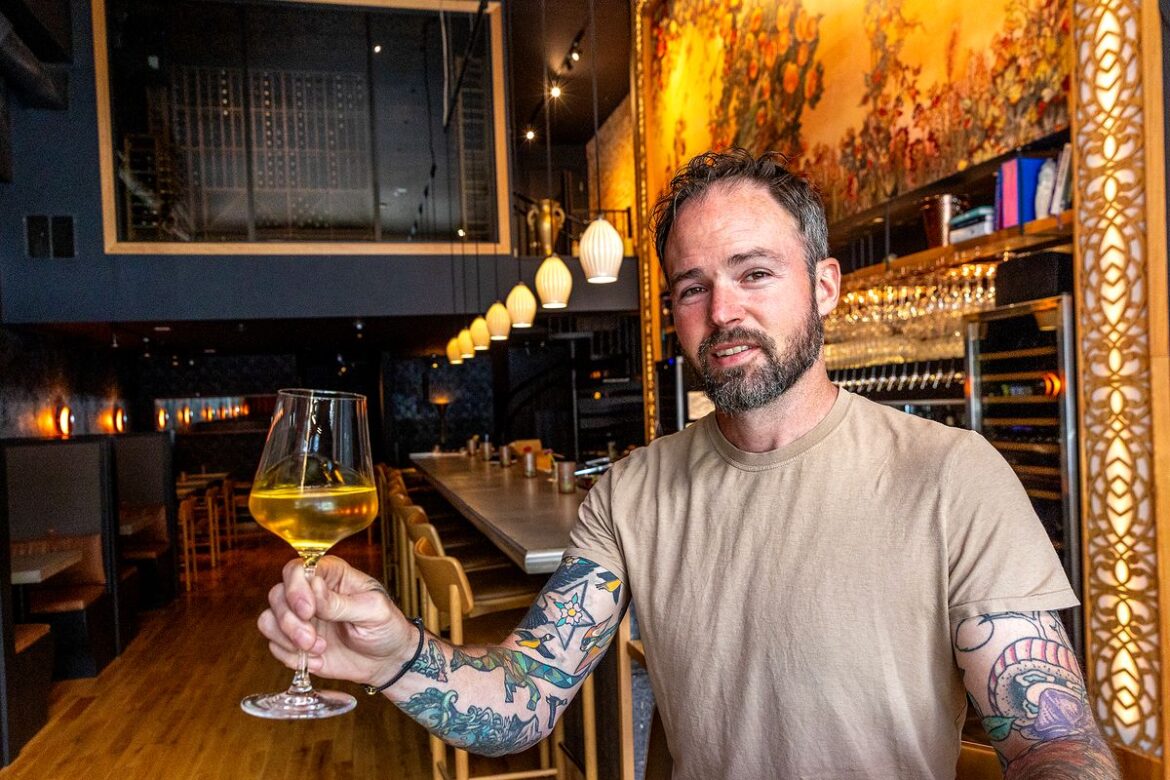MOSCOW — The owner of Persephone Wine & Cider Bar encourages his customers to savor the essence of Europe and the Northwest, one glass at a time.
Persephone sells lesser-known wines and ciders by the flight, glass and bottle, educating its clientele about the origins of what they’re drinking, said Adam Reed, the owner of the business at 312 S. Main St. in Moscow, which opened in May.
A recent French wine flight ($22) featured three 3-ounce pours: Sancerre (sauvignon blanc), Vouvray (chenin blanc) and Muscadet (melon de bourgogne) all from the Loire River Valley, which runs from Orleans, a city about 75 miles south of Paris, to the Atlantic Ocean.
French wines differ from their counterparts in the United States in how they’re often labeled by the region rather than the grape, Reed said, reflecting the cultural emphasis on expressing the sense of place in the wines.
U.S. wines are often labeled first with the grape or producer, followed by the region. Partly because of that, people might drink a Sancerre, not understanding the grape is sauvignon blanc, he said.
“The fruit (in French wines) will tend to be a little more restrained (than U.S. wines),” Reed said. “You’ll get more sort of nonfruit flavors, which can be minerality or earthiness or herbal notes or floral notes. … There is an approach, I think, in Old World wine-making that is much more trying to reflect the characteristics of the place.”
A similar philosophy is at play in Persephone’s cider flights. One recently showcased three 5-ounce pours of ciders ($10) that were described on the menu as “dry and apple forward.”
They were Gravenstein from Liberty Ciderworks in Spokane, McIntosh from Western Cider Co. in Missoula, Mont., and O.P. Dry from Finnriver Farm & Cidery in Port Townsend, Wash.
The McIntosh apples in the cider in that flight are from 80-year-old trees in Montana’s Bitterroot Valley, which had a widely known reputation for the high quality of its apples in the early 20th century, Reed said.
The ciders in the flight and others at Persephone are made with a winemaker’s approach that’s intended to bring out the unique taste of the fruit, he said.
“I feel like cider is underrepresented in the market,” Reed said. “Nobody really focuses on it. Cider falls into this weird gray zone between wine and beer. I’m advocating for it.”
The fruit for almost all of the wines and ciders is grown with sustainable methods such as being treated with organic fertilizers and pesticides or being raised at farms where biodiversity improves the health of animals and plants, he said.
In those operations, for example, sheep might graze and leave fertilizing manure in vegetation between grape vines that’s habitat for insects, which help control pests, Reed said.
The emphasis on wine and cider is behind the composition of its limited food menu, where the choices are intended as accompaniments to enhance whatever people are drinking, he said.


Dining and Cooking